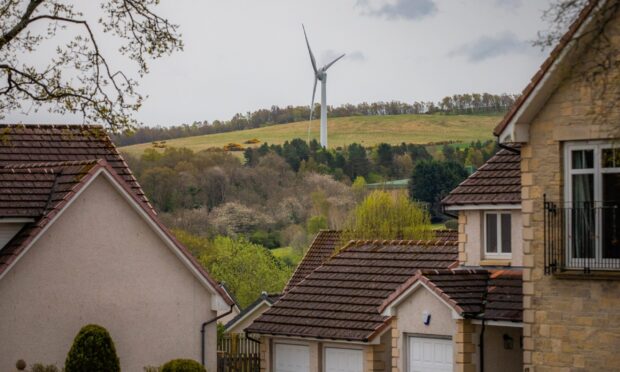Mountaineers have rejected a controversial study which claims wind farms have no impact on Scotland’s tourism jobs.
The research, published by BiGGAR Economics, looked at 18 turbine developments across Scotland and examined the number of people employed in tourism in the local area before and after they were developed.
It poured cold water over one of the biggest arguments against wind farm proliferation – an argument put forward by Donald Trump – and claimed to show that some of the local authority areas with the greatest growth in tourism employment also saw the greatest rise in inshore installations.
But the report has been slammed by the Mountaineering Scotland, which argues it is fatally flawed.
Dave Gordon, director for landscape and planning, said: “This report assumes that all wind farms are equal and have the same effect on tourism, but that’s not the case.”
Dr Gordon, who has worked on his own research for 30 years, said the BiGGAR report fails because it ignores the importance of location when measuring the effect of wind farms and uses sample areas which could fail to show very real effects.
“You wouldn’t expect wind farms to have any effect in areas where tourism is not dependent on landscape – and all the wind farms cited in this report are in such areas, with none having been objected to by Mountaineering Scotland,” he said.
“In areas where the landscape is a major factor in attracting tourism – such as mountain areas – our own surveys have shown that people are deterred by the presence of wind farms. However, these areas are not included in the BiGGAR report.”
Dr Gordon said there was a basic error in the design of the study: “If you are going to test for any effect from wind farm construction, you need a baseline where there are no wind farms to allow a proper comparison.
“In at least five of the locations in the study there were operational wind farms already there and in two more cases there were wind farms under construction.
“That really is a fatal flaw. You can’t have a valid before and after study without a proper baseline.”
He added: “The best that could be claimed would be that Scottish wind farms in areas where the tourism market is less sensitive to landscape have no aggregate effect on tourism jobs.
“And in view of the other flaws in the study, event that cannot be said with any conviction.”
Graeme Blacket, of Edinburgh-based BiGGAR, said he stood by the report.
“The analysis considers all wind farms over 10 megawatts that became operational over a two year period,” he said. “We would have been rightly criticised if we had been selective in our case studies as Mountaineering Scotland (MCoS) suggests.”
He added: “Our study did not specifically consider mountaineering related tourism. However, a recent survey by MCoS (which has been submitted to the forthcoming Whitelaw Brae Wind Farm Public Inquiry but does not seem to have been published on its own website yet) did and it found that only 1% of its own members visited mountains less as a result of wind farms while 2% visited more often because they like to see wind turbines.”










